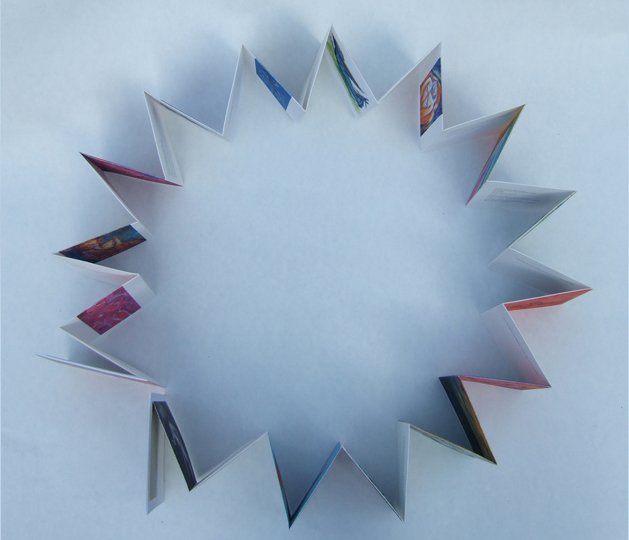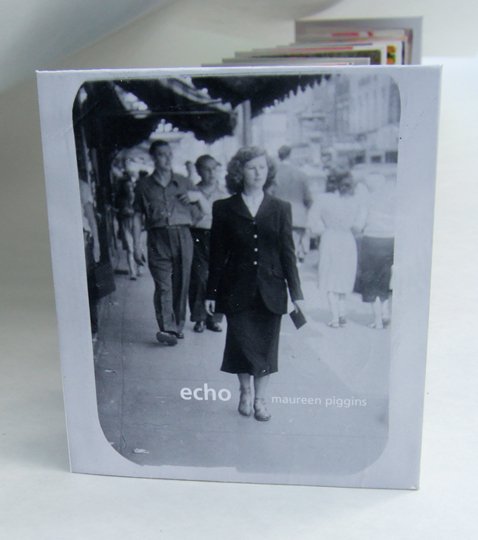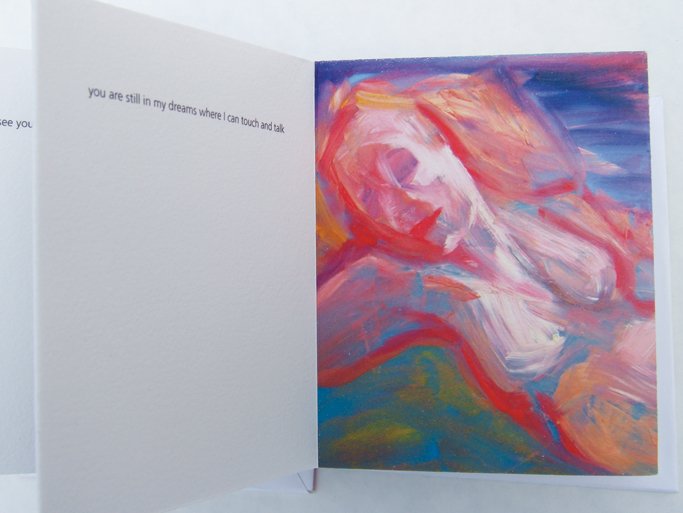
Echo
Handbound artist book, 64 pages, open edition French Fold accordion, giclée on Hanhnemühle paper. Original poetry and art ©2009 Maureen Piggins. Front cover photograph of artist’s mother circa 1965, credit unknown.
Closed: 5″h x 4.25″w x1.5″d; Fully extended: 5″h x 9 ft long.
My mother died at the age of 65 after 8 years of living with breast cancer. During the last months of her life, my father cared for her at home while my daily visits gave me insight into the strength of both my parents. We watched as her vitality succumbed to pain and the clouding of morphine and then finally to the actual process of dying. My memories are not all without happiness, but the urgency to invest the most painful into words and images has always been strongest – questioning memory’s distance, giving it a separate voice. In effect, these pages are a chronology of grieving that I believe never really ends, itself evolving into memory that is inseparable from the image of the one lost.
FORMAT: The book reads from the front cover through to the end of one side, with the back cover turned like another page, and continues along the second side back to the front cover. The symbolism of the format is two-fold: the content in the first half deals chronologically with illness, while the second half begins with the terminal clarity of death and explores the process of mourning; the intention is to make these two phases distinct yet connected. As grieving is not a linear process, we return again and again to the beginning, before death, reaching for memory, understanding and acceptance.
DISPLAY: Three Display Options, each inviting a different response from the reader: 1) Closed, placed upon it’s back cover: an intimate hand-held reading in a more traditional book format. 2) Fully extended: inviting the reader to walk the 9 feet down one side and back along the other, physically re-enacting the experience of the illness and death of a loved one, and the return to the beginning, before illness and death. 3) Upright in a circular format, front and back covers meeting: the reader again walks around the work, reading content from the front and back sides simultaneously, physically evoking the workings of memory and grief as a non-linear, continuous process.

circular display

front cover

detail

detail

back cover
